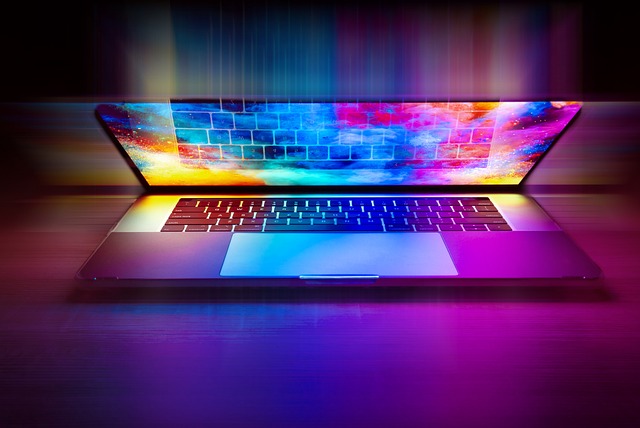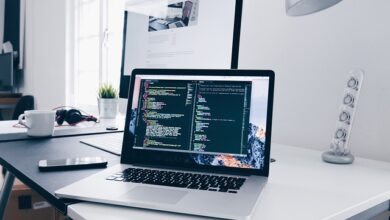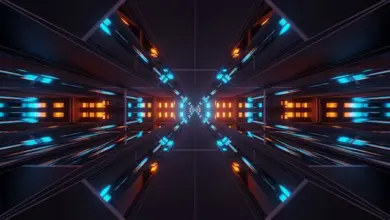
Building your own PC can be an exciting and rewarding project, offering you complete control over every component. Not only can it save you money compared to purchasing a pre-built system, but it also allows you to tailor your PC to suit your specific needs, whether it’s for gaming, video editing, or simple everyday use. This comprehensive guide will walk you through every step of the process, from selecting the right components to assembling them into a fully functional computer.
Table of Contents
- Why Build Your Own PC?
- Choosing the Right Components
- Central Processing Unit (CPU)
- Motherboard
- Memory (RAM)
- Graphics Processing Unit (GPU)
- Storage (HDD vs. SSD)
- Power Supply Unit (PSU)
- Case
- Cooling System
- Essential Tools and Workspace Preparation
- Step-by-Step Assembly Instructions
- Installing the CPU
- Installing the RAM
- Mounting the Motherboard
- Installing the GPU
- Connecting Storage Devices
- Power Supply Installation
- Cable Management
- Installing the Cooling System
- First Boot and Installing the Operating System
- Troubleshooting Common Issues
- Maintaining and Upgrading Your PC
1. Why Build Your Own PC?
Building your own PC offers numerous advantages over purchasing a pre-built machine:
- Customization: You can select the exact components to match your performance needs, whether you’re building a gaming rig, a content creation powerhouse, or a budget-friendly workstation.
- Cost Efficiency: Pre-built systems often come with unnecessary components or markups. Building your own PC allows you to allocate your budget where it matters most.
- Upgrade Flexibility: Building a custom PC means easier upgrades in the future. When it’s time to replace your GPU or add more storage, you’ll have a deeper understanding of the process.
- Satisfaction: The process of assembling and booting your very own PC for the first time is incredibly rewarding. It’s a learning experience that enhances your technical skills and understanding of hardware.
2. Choosing the Right Components
The first step in building a PC is selecting the right components. Each part has a crucial role in determining the performance and longevity of your machine. Below is an in-depth look at the key parts you’ll need:
Central Processing Unit (CPU)
The CPU is the brain of your computer, responsible for executing instructions and processing data. When selecting a CPU, consider its performance and compatibility with other components.
- Intel vs. AMD: Both companies offer excellent processors, but Intel CPUs are traditionally favored for high-end gaming due to single-core performance, while AMD processors excel in multi-core tasks, like video editing.
- Cores and Threads: CPUs come with multiple cores and threads, affecting multitasking and the speed of data processing. For general use, a quad-core processor should suffice, while gaming or video editing might require six cores or more.
Motherboard
The motherboard is the foundation of your PC, connecting all the components. Ensure that it is compatible with your chosen CPU and has enough expansion slots for additional components like the GPU, RAM, and storage.
- Form Factor: Motherboards come in different sizes (ATX, Micro-ATX, Mini-ITX), which determine the size of the case you’ll need.
- Chipset: The chipset determines the motherboard’s features and compatibility with CPUs. Popular chipsets include Intel’s Z-series and AMD’s X-series.
- Future Proofing: Consider motherboards with future-proofing features like PCIe 4.0 for faster storage and GPU performance.
Memory (RAM)
Random Access Memory (RAM) is critical for multitasking. The more RAM you have, the smoother your PC will perform when running multiple applications.
- Capacity: 8GB is generally sufficient for everyday tasks, but 16GB is ideal for gaming or light video editing. Serious creators or those using high-end gaming setups may opt for 32GB or more.
- Speed: RAM speed (measured in MHz) also affects performance. Make sure to select RAM compatible with your motherboard’s maximum supported speed.
Graphics Processing Unit (GPU)
If you’re building a gaming or video editing PC, the GPU is one of the most important components.
- NVIDIA vs. AMD: Both offer great options. NVIDIA’s GeForce series is generally preferred for high-end gaming, while AMD’s Radeon series is competitive, especially for budget-friendly builds.
- VRAM: Video memory (VRAM) is essential for handling complex textures and high resolutions. For gaming at 1080p, 4-6GB of VRAM is sufficient. For 1440p or 4K gaming, 8GB or more is recommended.
Storage (HDD vs. SSD)
Storage is where all your files, games, and operating systems will reside. There are two main types of storage devices: Hard Disk Drives (HDD) and Solid State Drives (SSD).
- HDD: Offers large storage capacity at a lower price but slower read/write speeds.
- SSD: Much faster but more expensive. An SSD is ideal for your operating system and key programs, while an HDD can serve as mass storage.
Power Supply Unit (PSU)
The PSU supplies power to all components, making it a crucial part of your system.
- Wattage: Ensure your PSU has enough wattage to support all your components. Use online calculators to estimate the power requirement, and always opt for a PSU with a little extra wattage for future upgrades.
- Efficiency Rating: Choose a PSU with an 80+ efficiency rating to ensure stable and efficient power delivery.
Case
The case houses all your components and plays a role in airflow and cooling.
- Form Factor Compatibility: Ensure your case is compatible with your motherboard’s size (ATX, Micro-ATX, etc.).
- Airflow: Look for cases with good ventilation and space for fans or liquid cooling systems.
Cooling System
Cooling is essential to maintain your PC’s performance and longevity.
- Air Cooling: Air coolers are budget-friendly and easy to install, using fans to dissipate heat.
- Liquid Cooling: Ideal for high-performance PCs, liquid cooling provides better thermal management but comes at a higher cost and complexity.
3. Essential Tools and Workspace Preparation
Before diving into the assembly, gather the necessary tools and prepare your workspace. You’ll need:
- Phillips-head screwdriver
- Anti-static wristband (to avoid damaging sensitive components)
- Thermal paste (if your CPU cooler doesn’t come with pre-applied paste)
- A clean, well-lit workspace with enough room to spread out your components
4. Step-by-Step Assembly Instructions
Now that you have all your components and tools, it’s time to assemble your PC. Follow these steps carefully:
Installing the CPU
- Open the motherboard’s CPU socket.
- Gently place the CPU into the socket, aligning the notches.
- Close the socket clamp to secure the CPU.
Installing the RAM
- Open the RAM slots on the motherboard.
- Insert the RAM sticks, ensuring the notches align.
- Press firmly until the clips snap into place.
Mounting the Motherboard
- Install the I/O shield on the case.
- Place the motherboard inside the case, aligning it with the standoff screws.
- Secure the motherboard with screws.
Installing the GPU
- Open the PCIe slot on the motherboard.
- Insert the GPU, ensuring it is seated firmly.
- Secure the GPU to the case with screws.
Connecting Storage Devices
- Connect the SSD or HDD to the motherboard via SATA cables.
- Secure the storage devices in their designated slots within the case.
Power Supply Installation
- Mount the PSU in the case, usually at the bottom.
- Connect the PSU cables to the motherboard, CPU, GPU, and storage devices.
Cable Management
Organize your cables to improve airflow and aesthetic. Use cable ties to secure loose cables.
Installing the Cooling System
- Attach your CPU cooler (air or liquid) according to the manufacturer’s instructions.
- Ensure the cooler is securely fastened and connected to the motherboard.
5. First Boot and Installing the Operating System
After assembling your PC, it’s time for the first boot:
- Connect your monitor, keyboard, and mouse.
- Power on the PC. If everything is connected properly, the system should boot up.
- Insert a bootable USB drive with your preferred operating system (e.g., Windows, Linux) and follow the on-screen instructions to install it.
6. Troubleshooting Common Issues
If your PC doesn’t boot, don’t panic. Here are a few common troubleshooting steps:
- Check Power Connections: Ensure all power cables are properly connected.
- Re-seat Components: Sometimes, a loose connection can cause issues. Re-seat the CPU, RAM, and GPU.
- BIOS Update: Ensure your motherboard’s BIOS is up to date if you’re using newer hardware.
7. Maintaining and Upgrading Your PC
To keep your PC running smoothly:
- Regular Cleaning: Dust can accumulate and hinder cooling, so clean your PC every few months.
- Upgrade Components: Over time, consider upgrading your GPU, RAM, or storage to keep up with performance demands.



